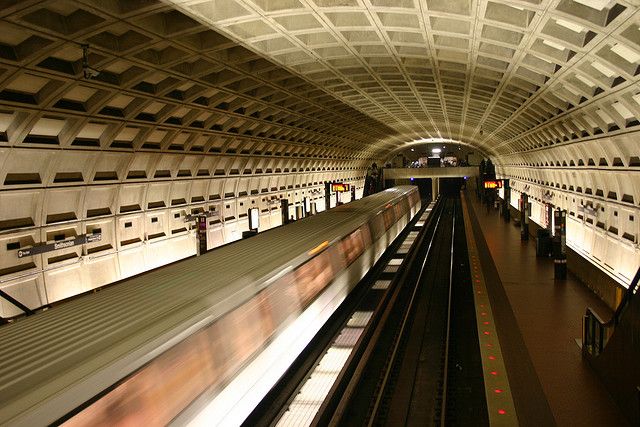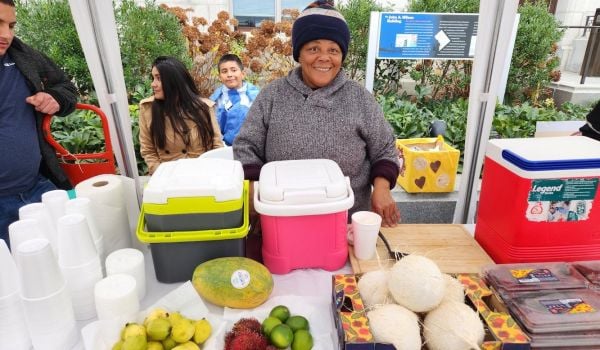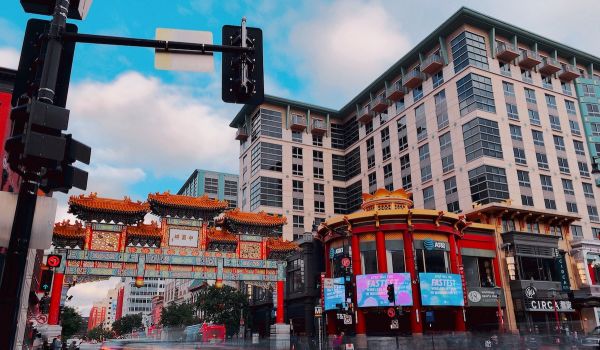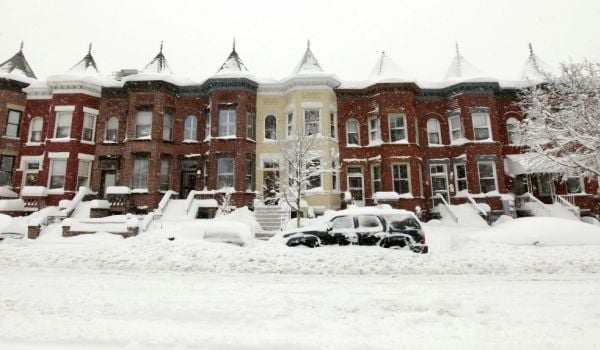Growing up in Northern Virginia, David Garber thought the neighborhood of Anacostia, in Southeast Washington, was all housing projects. Then three years ago, he bought his own house in the neighborhood, overhauled it completely, and embarked on a career in renovation and historic preservation in one of the District’s oldest neighborhoods. Today he’s a well-known advocate for the community.
As an adult, Garber started learning things he never knew about some of DC’s up-and-coming neighborhoods by reading local blogs. When he first began looking for information about Anacostia, he says, “There wasn’t a lot of great information coming out of the neighborhood.” The majority of positive news was published in its local newspaper, East of the River, which doesn’t reach the majority of the DC population west of the Anacostia River. So, in 2007 Garber started writing what is now one of Southeast Washington’s best-known neighborhood blogs, And Now, Anacostia. Blogging is a side project for Garber, but one, he said, with an ulterior motive that ties into his day job: “Making Anacostia look better.”
Garber’s investment in his neighborhood is not uncommon in Washington. Workers up and down Pennsylvania Avenue and K Street might be the city’s recognized power players, but it’s the District’s neighborhoods that give it character — and it’s those neighborhoods that will shape the next phase of Washington media. In recent years, the D.C. area has witnessed a proliferation of local blogs, some covering the entire city, such as DCist, and others homing in on just a few blocks, like H Street Great Street.
Washington’s dozens of hyperlocal online news sources—those that cover a narrower audience than traditional media outlets, whether a neighborhood or just a portion of it—are filling important information gaps left by mainstream media. As local print newspapers have folded and news media in general have become more interactive, hyperlocal digital media have stepped in to cover issues that matter at the neighborhood level. In the process, they’re changing the way we interact with the cities in which we live.
Given the diverse demographics and community needs among Washington’s neighborhoods, it’s not surprising that the District has been a hotbed of growth for hyperlocal news coverage. This summer saw the launch of TBD, an online and TV news outlet that also works with a network of hyperlocal bloggers, and new hyperlocal websites for local TV broadcaster WUSA. The national Public Media Corps launched its inaugural class of fellows in the Washington neighborhoods of Columbia Heights and Anacostia with a mission of “inventing creative methods of engaging their communities around the true benefits of media in the public interest.”
All these platforms and projects share one thing: a passion for the places where Washingtonians work and play, love and live, vote for their City Council representatives and run for the PTA. And new media are doing things to galvanize community engagement that other media aren’t, especially in urban development processes.
Take, for example, an incident this past spring. While working on the District’s 2011 budget, members of the Council of the District of Columbia nearly cut funding for a $1.5-billion streetcar system planned for Northeast Washington’s H Street corridor, a developing area currently experiencing an infusion of new restaurants and younger residents. Greater Greater Washington, a blog written by David Alpert that covers the metro region, broke the news of the proposed 11th-hour budget cut on the morning of May 26 and provided a phone number to Council Chairman Vincent Gray’s office. Councilmembers were flooded with hundreds of emails, phone calls, and Twitter appeals to reinstate funding for the project, and later that afternoon, the Council allocated $47 million to the streetcars in the proposed budget.
Alpert himself has no formal training in journalism or urban planning, a characteristic shared by some of DC’s other local bloggers, like Dan Silverman. The voice behind Prince of Petworth, Silverman also covers neighborhoods across the District at a granular level of detail. He started the blog in 2006 to highlight the development of his rapidly changing neighborhood of Petworth, but decided to expand his scope. “I walk everywhere,” Silverman explained, “and I saw changes in [nearby] Columbia Heights affected me almost as much as changes in Petworth.” Among the subjects that pique his interest are dog parks, bike routes, gentrification, crime, and neighborhood boundaries. Though his blog is one of the oldest and best-known in the city, he views his role as neither journalist nor pontificator: Instead, he tries to create a sense of trust in the blog that will allow candid conversation among members of the community.
Other bloggers take a more active role in bridging the gap between providing news about the community and effecting change there. Veronica Davis, for example, is an urban planner in Southeast Washington who blogs at Life in the Village, about Fairfax Village, a condominium association in Southeast, and its neighborhood Hillcrest. Her posts inform readers how to contact their local elected officials and what open action items are still sitting on the public agenda. And because her readers know and trust her, they’re more likely to get involved. “My neighbors read this blog, so then what they say is, well, Veronica’s doing all that she can, so let me go ahead and start putting in my 311 request or let me start emailing, so then all of a sudden [government officials] start getting these floods of emails,” Davis said this summer.
With the media landscape constantly changing, there’s still plenty to learn about the potential for hyperlocal media in shaping urban development. Although many of these hyperlocal blogs will report both good and bad news, others are apt to focus on the positive. Online news coverage doesn’t always lead to offline action, and it’s of little use to people who lack online access. But as a test case, Washington’s hyperlocal media show how a wider variety of residents can become more engaged in processes that have often been left to a much smaller group of individuals. As blogger David Alpert observed this summer, “A blog can get a lot more people to be participants.” And as urban populations swell, diverse input in urban planning can’t be a bad thing.


_600_350_80_s_c1.jpg)













